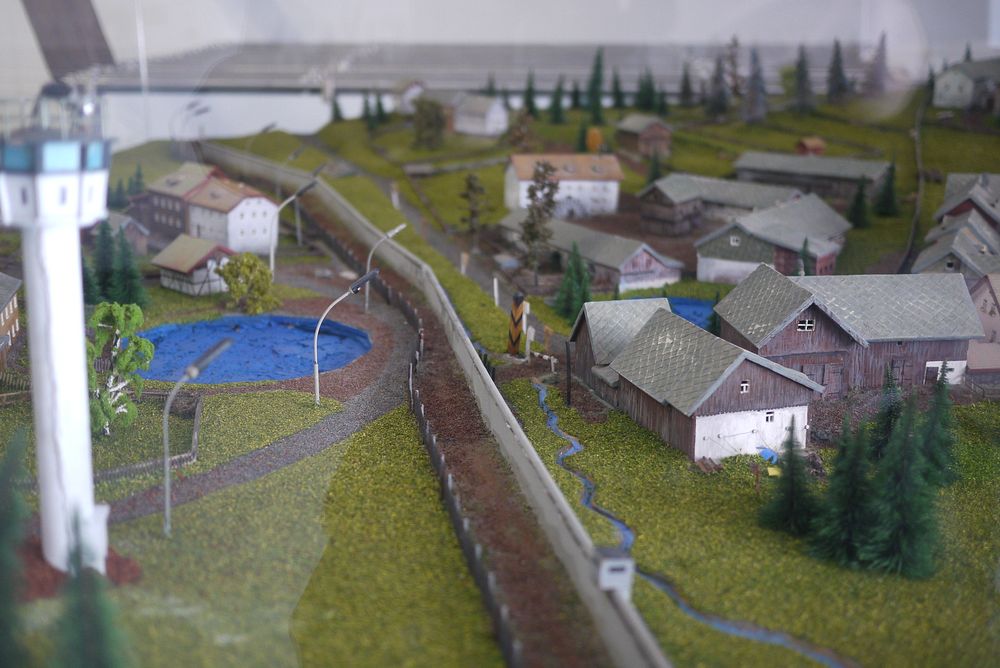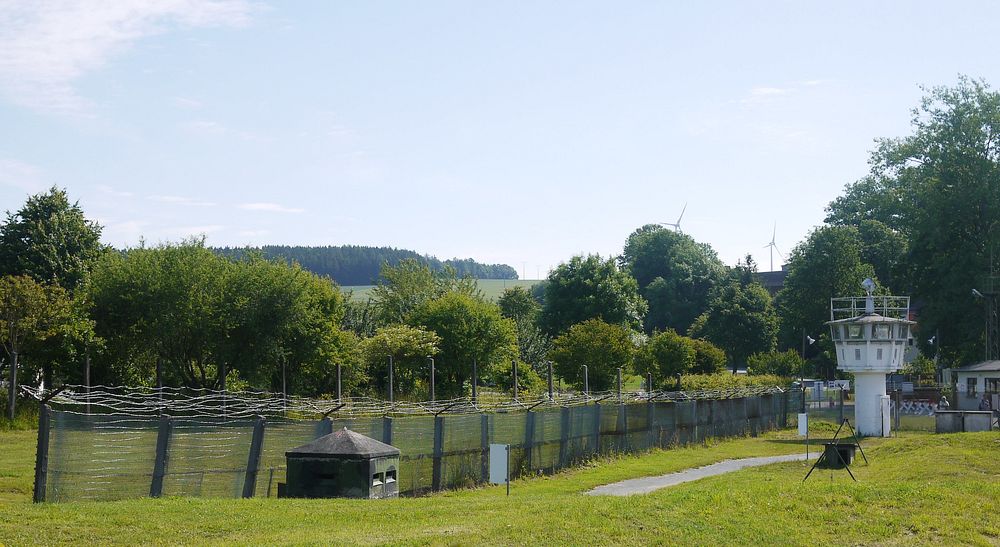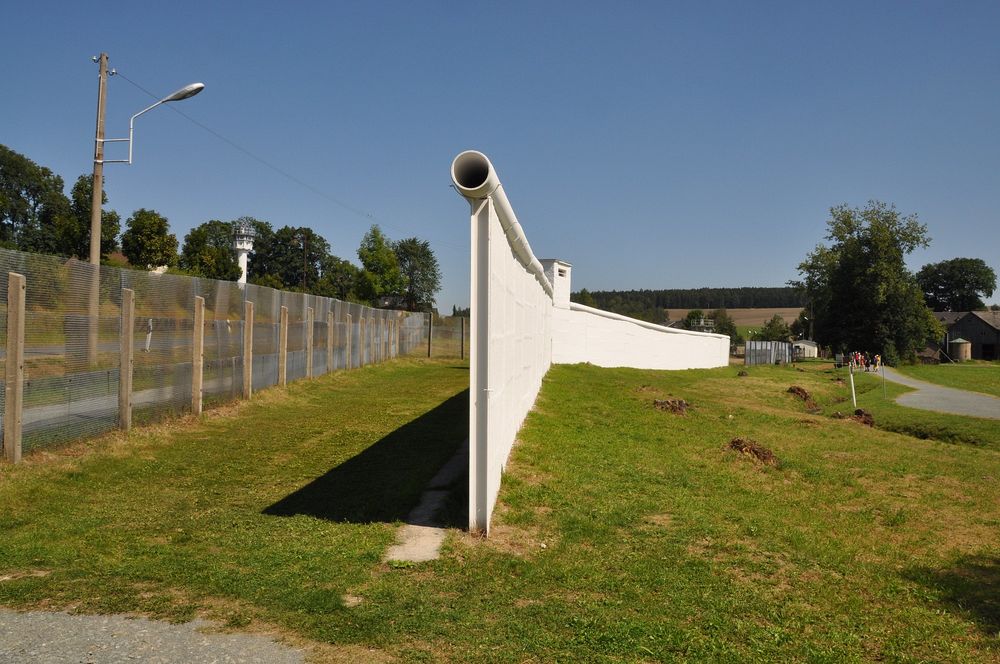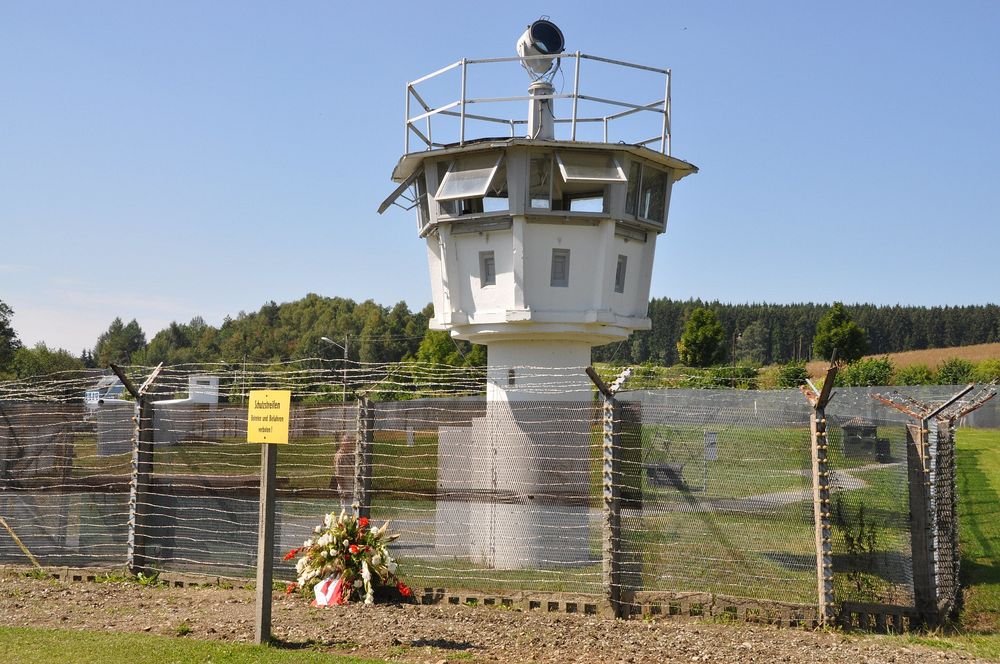
The village of Mödlareuth in south Germany, straddles the border between the two federal states of Bavaria and Thuringia. For more than 140 years, this border, which manifests itself in the form a small stream, made little difference to the daily life of the local populace. There was just one school and one restaurant, both on Thuringia, and the villagers went to the same church in the neighboring Bavarian municipality of Töpen.
But after the end of World War 2, political boundaries that meant little before became the source of growing tension. Germany was divided into four occupation zones and divided between the Allies (United States, Britain, France and the Soviet Union), their boundaries drawn along the territorial boundaries of 19th-century German states and provinces. Then talks between the Western Allies and the Soviets broke down, and two major regions emerged—East Germany, occupied by the Soviets, and West Germany occupied by the rest of the Allies. A new border was drawn up. Anything that came in the way was bulldozed. Mödlareuth, with its community split between the two states, found themselves in a peculiar position. A 10-yard buffer zone was set up along the stream that people once walked back and forth at will. Now they had show papers each time they crossed. Nearly a decade later, the border became more tangible, more permanent and more restricting.

A section of the wall at Mödlareuth. Image credit: Hollyrik Photography/Shutterstock.com
In 1966, East Germany started building a 1,300 kilometers-long Inner German border that ran from the Baltic Sea to Czechoslovakia, right through the middle of the small farming community. A brick wall went up, two brick walls in fact, with a no-man’s zone in between. This was accompanied by watch towers, guard dogs and machine gun-toting guards. Later, mines were installed along the wall in East Mödlareuth as a further deterrent. The wall through Mödlareuth was 700 meters long, and with no checkpoint, it truly separated the village. Approaching the wall from the East German side meant sure death. Photographing the wall was punishable by imprisonment. Even waving at friends or family across the border could get you into trouble.
“We had the wall to the front and, to our rear an electric fence,” recalls resident Arndt Schaffer.
Families were divided, requests to go to the other side was refused, even for funerals.
“The relatives had to go to a piece of high land and watch the burial from afar,” he said.

Part of the Wall in the old East German village of Modlareuth. Image credit: Edward Haylan/Shutterstock.com
While one side of the village was shut off from the world, the West German side of the village was suddenly exposed to tourism. Apart from Berlin, Mödlareuth was one of only handful of communities that was slashed through by the wall. Eventually, Mödlareuth earned the name “Little Berlin” and people came from all over West Germany and beyond to take a closer look at the wall that had so rudely divided a village. Even US vice president George H.W. Bush made a stop at Mödlareuth during an official visit to the Federal Republic of Germany in 1983.
One month after the fall of the Berlin Wall, in 1989, villagers tore down part of the wall to create a crossing to allow families from both sides to mingle. Six months later, the Mödlareuth Wall was knocked down using a bulldozer. A 100-meter portion of the wall was retained as a memorial and is now the centerpiece of the Mödlareuth Museum, which also includes a watchtower, metal fencing, a reconstruction of the heavily fortified barrier and other relics.
Mödlareuth still remains a divided village, owning to its geography. There are two mayors, one each from Bavaria and Thuringia, two sets of postcodes, car registrations and dialing codes.

The stream that forms the boundary between Thuringia and Bavaria, which runs through the middle of the village. Photograph taken in 1949. Image credit: Otto Donath

Villagers breach the wall in December 1989, one month after the fall of the Berlin Wall.

Image credit: Google Street View

Image credit: Taylor Sargeant/Flickr

A model of the village at Mödlareuth Museum. Image credit: Hellebardius/Flickr

Image credit: Hellebardius/Flickr

Image credit: Marcus Meissner/Flickr

Image credit: Marcus Meissner/Flickr
References:
# BBC, http://www.bbc.com/travel/story/20191106-the-german-village-split-by-a-wall
# The Irish Times, https://www.irishtimes.com/news/united-german-village-remains-divided-1.500756
# The Irish Times, https://www.irishtimes.com/news/village-retains-walls-and-scars-of-cold-war-1.718644
# The Scotsman, https://www.scotsman.com/news/world/little-berlin-marks-40th-anniversary-of-its-own-cold-war-wall-1-1414167



Comments
Post a Comment